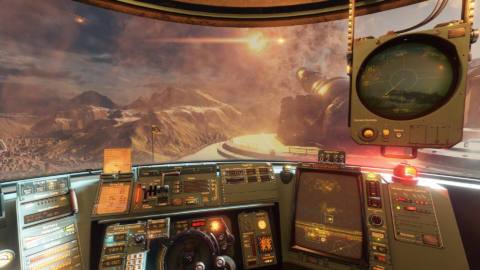A pre-built gaming PC is probably the most exciting purchase you can make. We’re talking about an entirely new system—perhaps even your very first one. But it can be a little daunting, too, seeing component after component, spec after spec, and trying to separate the wheat from the chaff. We’ve all been there.
In fact, I’ve been there enough to know that actually, it doesn’t have to be as daunting as it might at first seem. And I’ve helped others who have been there enough to know what the most common pitfalls are and what to focus on to get cracking and make a good gaming PC purchasing decision.
Once you approach it systematically by narrowing down your choices bit by bit, it becomes a rather straightforward process. Which is great, because gone are the days of incredibly overpriced builds—the barrier for entering the PC gaming market has never been lower. There are plenty of wonderful gaming PCs at pretty reasonable prices these days. Especially given it’s holiday season and there are already some cracking Black Friday gaming PC deals popping up.
If you keep the following tips in mind I think you’ll have a much easier time figuring out which PC to go for:
- Start by choosing a graphics card
- 16 GB of RAM is fine on a budget, but try to get DDR5
- Make sure it has an NVMe SSD with 1 TB capacity or more
- Consider your CPU’s general performance and socket upgradeability
- Remember you can always upgrade later
1. GPU first

1. Start by choosing a graphics card
A gaming PC isn’t so much a single product as it is a collection of components, each with its own merits to consider. While this can initially make it a little overwhelming to decide on a PC, all it really means is that you have to narrow down what you want step by step. And the best way to do that is to start with the GPU.
After you’ve figured out your budget and eliminated options outside of it, start thinking about what graphics card you want in your gaming PC. Provided all the other components are at least passable, a good graphics card will have the most impact on your gaming performance.
We have some new graphics cards approaching in the form of the Nvidia 50-series, codenamed Blackwell, but for now, the RTX 40-series is where it’s at for Team Green, and if you opt for an AMD card you should be going for an RX 7000-series one.
You can check out our GPU hierarchy chart to get a quick feel for how all the different graphics cards stack up against each other, and of course, you can check out the full run-down of the best graphics cards, but here’s a super basic breakdown.
The RTX 4090 is the best of the best but super expensive. The RTX 4080 Super is the best high-end graphics card that isn’t ridiculously expensive, alongside the AMD RX 7900 XTX. These graphics cards are great if you have a 4K monitor and want to make the most of it, or a 1440p one with a high refresh rate.
Below this, we’re in mainstream high-end territory, with cards like the RTX 4070 Super and RX 7800 XT. These should be capable of playing modern AAA games at 1440p on max settings, though not at high refresh rates without dropping below max. They’re your ideal pick for 1440p monitors with a 165 Hz refresh rate, for example, or for some 4K gaming in all but the most demanding games.
Finally, you get to entry-level territory with the RTX 4060, 4060 Ti, and RX 7600. These should get you by in 1080p and should be capable of handling games at 1440p on medium or medium-high settings. Then there are integrated APU builds for those on a super strict budget, which are more of a stepping-off point for a later GPU upgrade.
If you figure out what kind of performance you’ll be happy with, you can pick the graphics card that’ll net you that level of performance, filter out all PCs that have graphics cards you don’t want, and go from there. Starting by doing this is a great way to narrow down your options.
2. RAM
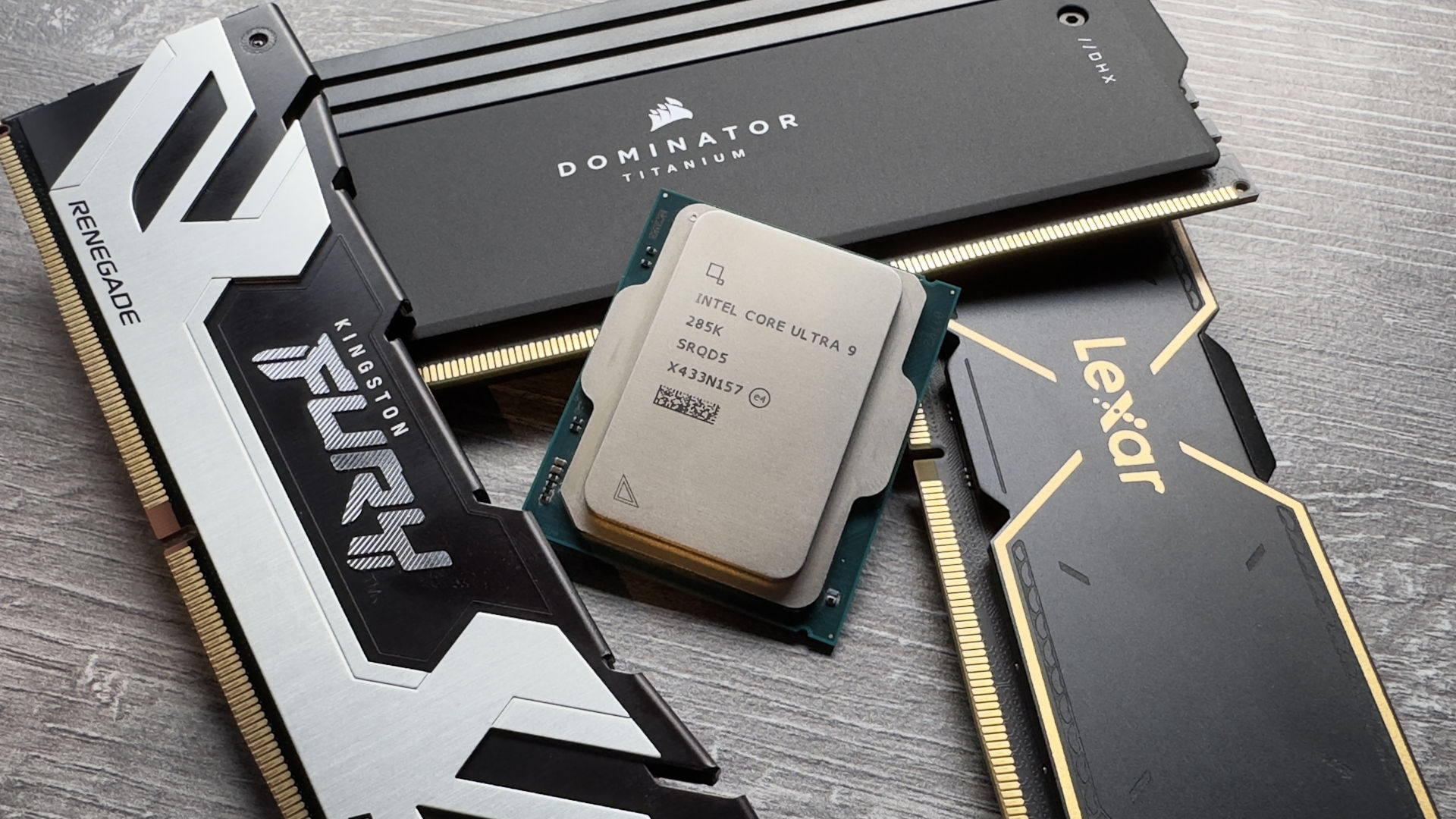
2. 16 GB of RAM is fine on a budget, but try to get DDR5
It seems like only yesterday that 16 GB of RAM was the gold standard for gaming PCs, but that’s no longer true. Today, 32 GB is the gold standard. This, however, has led some to assume that gaming PCs with 16 GB of RAM should be avoided entirely. But this isn’t true, either.
16 GB of RAM will bottleneck you in some games, especially if you have a lot going on in the background. But if you close most of your background apps, 16 GB should get you by in most games, and for some games it’ll be fine with background apps open, too. It won’t be the best RAM in the world, but it’ll get you by.
The main reason to opt for 32 GB of RAM is for the peace of mind to know that you could play pretty much anything, at any settings, without memory capacity being a bottleneck. But if you’re on a budget, you’re probably not expecting to be able to play any game at any settings, so only having 16 GB of RAM shouldn’t be catastrophic.
This is because, provided you’re not changing RAM generation, RAM is super easy to upgrade and not massively expensive, either. That generational proviso is important, though. If you get a gaming PC with DDR4 memory, your motherboard won’t support DDR5 so you won’t be able to upgrade to it.
If you’re going for something that you might want to upgrade, then, I’d ensure you get a gaming PC that has DDR5 memory. It’s not ridiculously faster for gaming, but it’s not insignificantly so, either, and it has much more longevity than DDR4.
Of course, if you have the option, a nice, fast DDR5 kit is ideal. 6,000 MT/s is great, but 5,600 MT/s is fine, too.
3. NVMe SSDs
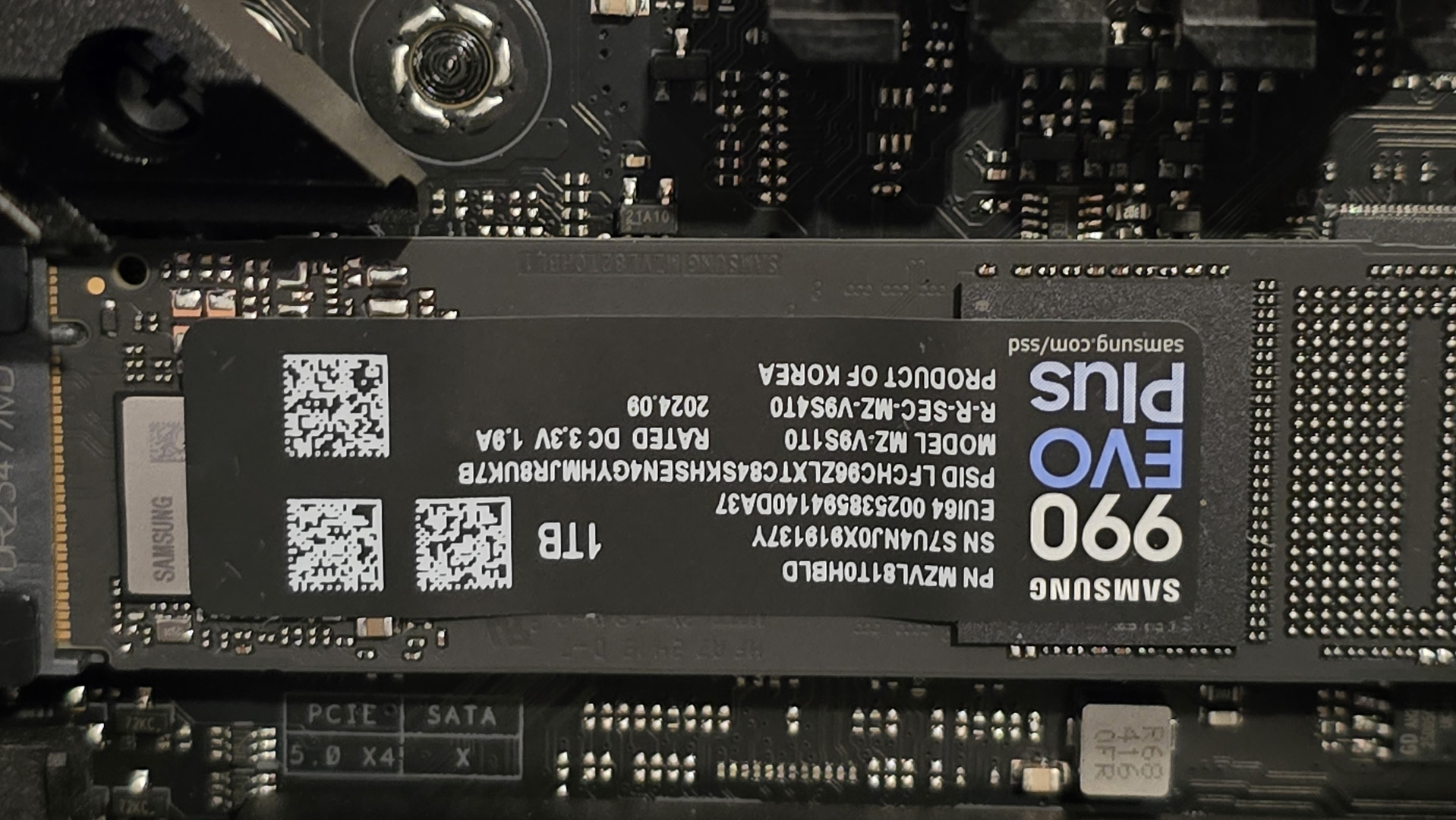
3. Make sure it has an NVMe SSD with 1 TB capacity or more
Most PCs these days come with an NVMe SSD for their storage, but occasionally you’ll come across one with an old-school hard drive or SATA SSD, and these you should avoid. They’re great for extra mass storage, but not as main system drives.
A few years ago, NVMe drives were nice-to-haves but far from ubiquitous. Plenty of people still rocked SATA SSDs as a primary storage device, and this was fine, even when PCIe NVMe drives started hitting the market. That’s primarily because, at the time, NVMe drives were so much more expensive.
These days, however, NVMe drives are as cheap as SATA drives were back then, and they’re the de-facto pick. In fact, unless you’re cash-happy, it’ll almost certainly be a PCIe 4.0 NVMe drive that you want, not a 5.0 one. PCIe 5.0 drives right now still aren’t really worth the cost for gaming, so don’t go paying extra for a gaming PC just because it has a PCIe 5.0 drive.
Also don’t underestimate SSD capacity. Yes, you can upgrade it down the line, but you risk running out of space well before you’d like if you only have 512 GB of storage, for instance. Unless you’re on a super-strict budget, given game and application install sizes these days, 1 TB capacity is a minimum, and 2 TB or more is ideal.
4. CPUs and sockets
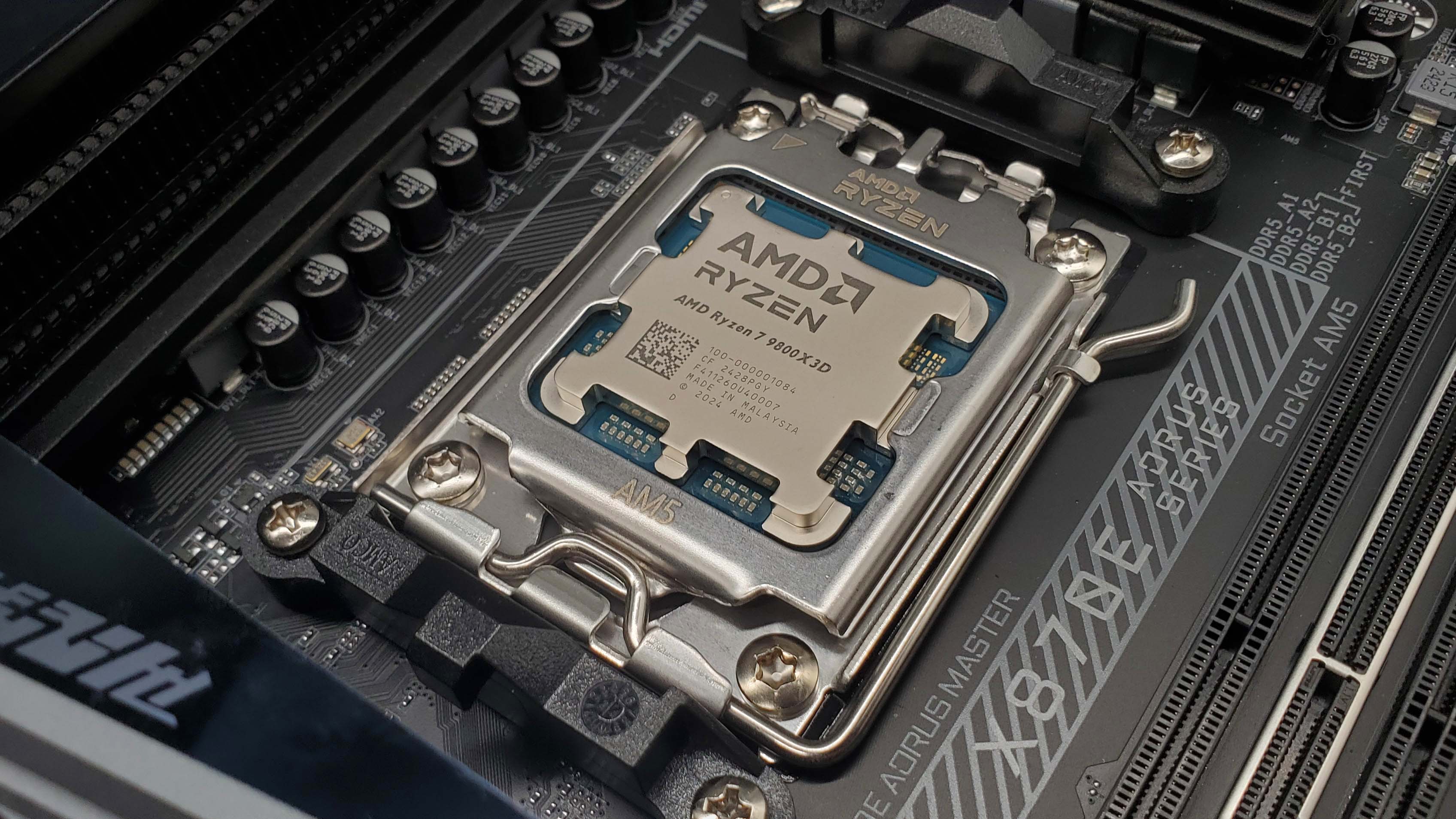
4. Consider your CPU’s general performance and socket upgradeability
When you’re buying a gaming PC, of course, you’re going to care about its gaming performance. But it can be easy to forget all the other things you might use your PC for, things that might require a more powerful CPU.
Budget CPUs such as the Intel Core i5 13400 and the six-core AMD Ryzen 5 7600, although not the best CPUs on the market, are perfectly fine for gaming. However, you might be kicking yourself for not getting better if, for example, you end up doing CPU-intensive work such as encoding further down the line.
Similarly, if budget’s no concern and you want something ultra-high-end, you might go for an X3D chip such as the Ryzen 7 7800X3D or 9800X3D, because these will offer the best gaming performance without a doubt. But if you want the absolute best productivity performance, you might be best sacrificing a little gaming performance and going for a high-end Core i9 or Ryzen 9. There are no hard rules, just don’t forget to consider performance in areas other than gaming.
Don’t forget to think about the CPU and motherboard socket, either. When you’re building your own gaming PC you have to consider the motherboard socket to ensure it’s compatible with your CPU, but when you’re buying a pre-built gaming PC, you don’t have to consider compatibility at all. In fact, sockets often aren’t even listed in a PC’s specifications.
So, if you don’t have to worry about compatibility with a pre-built, why care about the socket? The answer is upgradeability. While a gaming PC’s socket obviously supports the CPU sitting in it right now, it might not support the CPU you choose to upgrade to down the line.
Right now, what this mostly means is that you should take care when considering a gaming PC with an Intel 13th or 14th Gen CPU, because these are the last generations that fit the LGA 1700 socket, meaning you’ll need a new motherboard to upgrade to a new CPU whenever you decide to upgrade, and Intel motherboards can be expensive. AMD 7000-series CPUs, on the other hand, fit the AM5 socket, and this is compatible with a 9000-series upgrade and will be compatible with the generation after that, too.
5. Upgradability
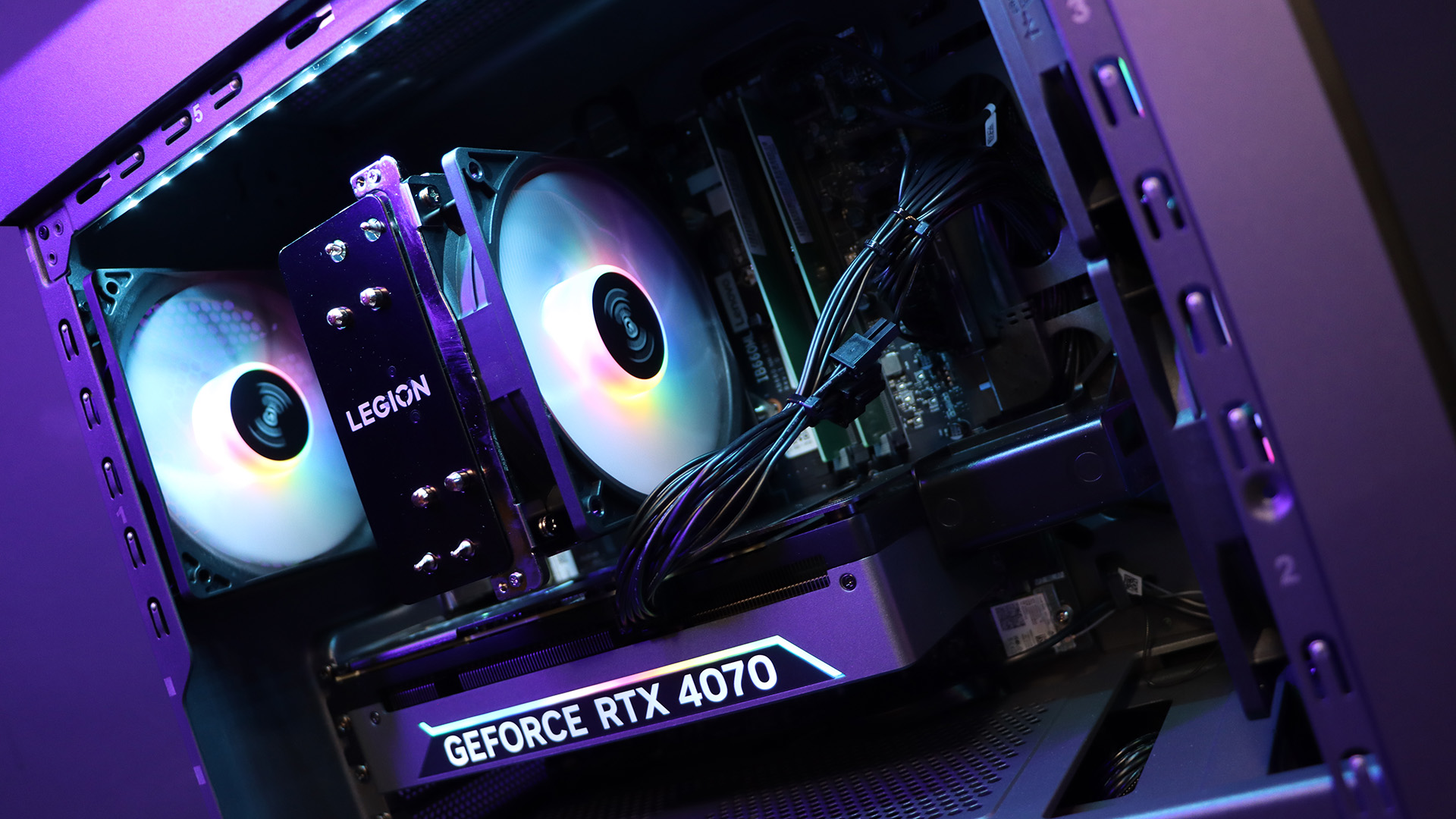
5. Remember you can always upgrade later
There’s a lot to think about when it comes to gaming PCs because they’re essentially a collection of modular parts. But while this might make things seem a little overwhelming at first—something this guide has hopefully helped with—it’s also a massive boon. That’s because it means pretty much everything is upgradeable.
What this means practically, if you’re buying your first PC, is that you shouldn’t worry too much about getting something wrong and being stuck with it forever. There’s so much you can upgrade in your computer, from its graphics card to its CPU, memory, motherboard, storage, and plenty more.
There are a few things you need to keep in mind to ensure it’ll be easily upgradeable, but I think we’ve covered those, here.
You want to ensure you get a PC that supports DDR5 memory if you want to be able to upgrade that without switching motherboards. And ditto the socket: AM5’s the way to go if you want upgradeability, which means an AMD 7000-series or 9000-series chip.
Intel’s 13th and 14th Gen chips use LGA 1700 and so are incompatible with the latest Intel generation, and it’s unlikely that the next Intel generation will use the same socket as the current Core Ultra 200S generation.
Apart from those caveats, though, have at it. You’re not committing yourself to a never-changing rig. Most people who buy a gaming PC will probably end up upgrading some component or other before long. If you do so and you catch the PC building bug, you might even be in for a ship of Theseus scenario, perpetually rebuilding your gaming PC into eternity. There’ll always be a “later”, so don’t stress it too much.


